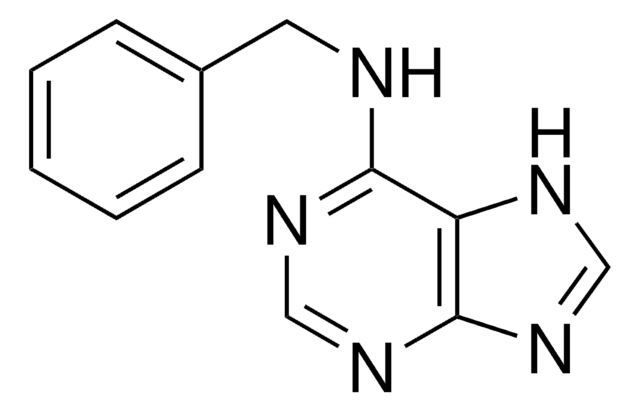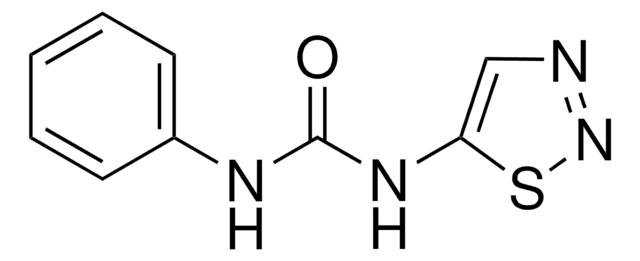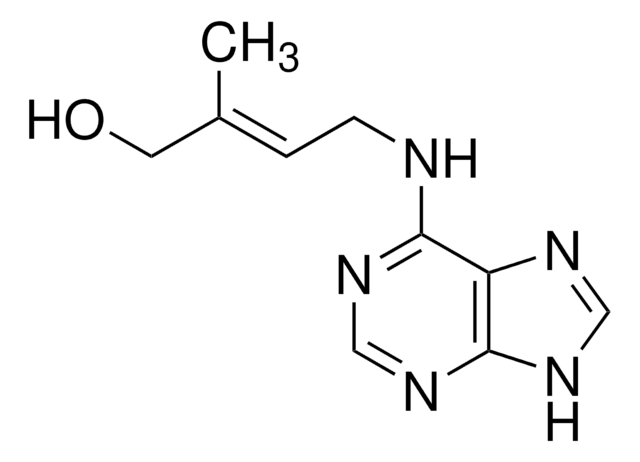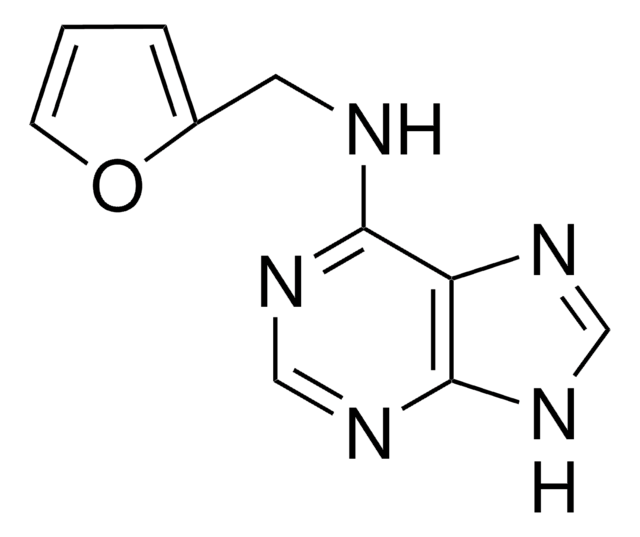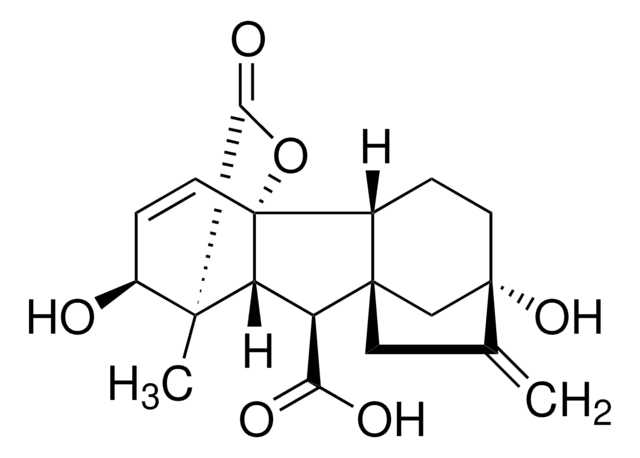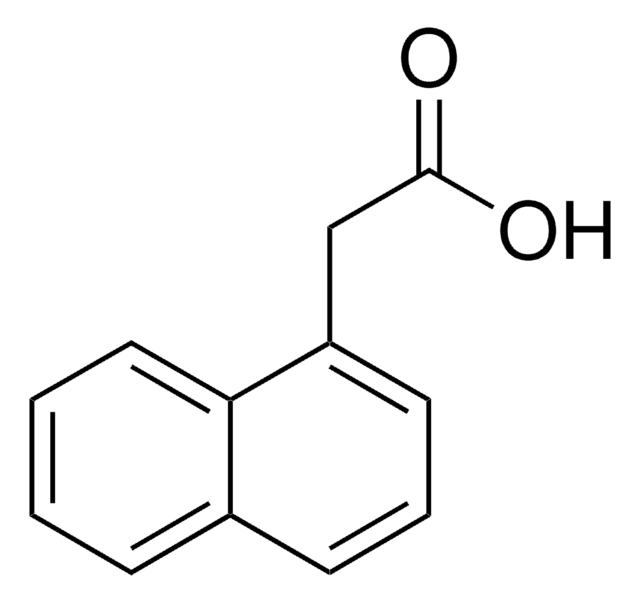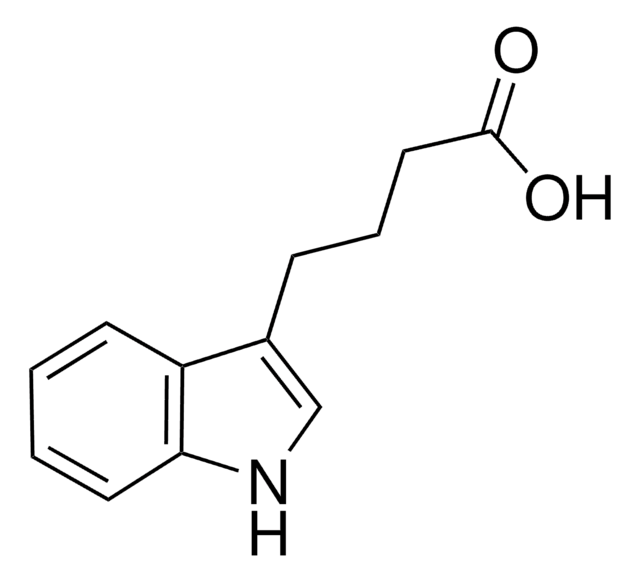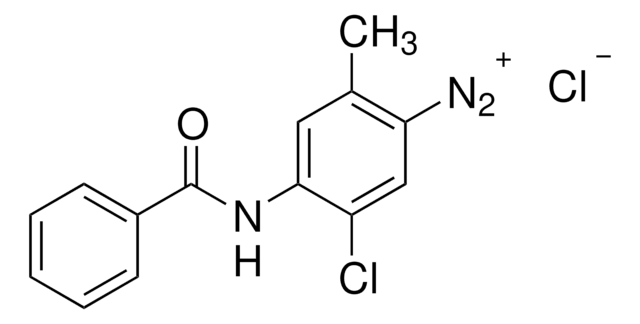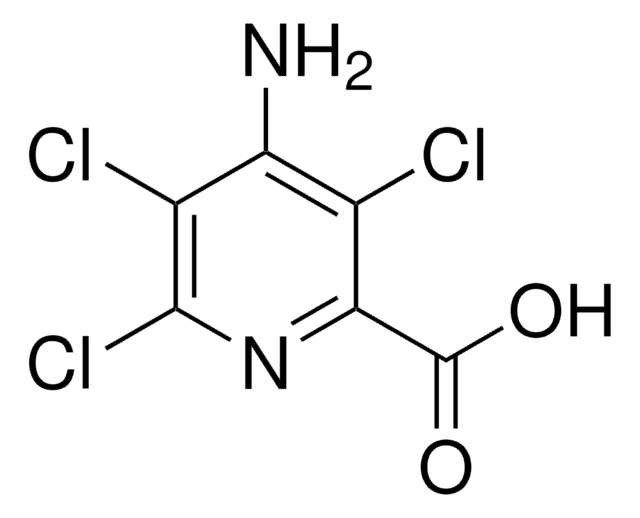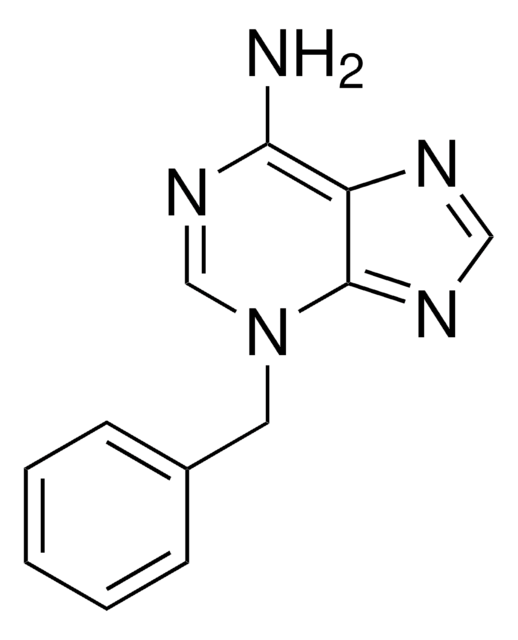P6186
Thidiazuron
BioReagent, suitable for plant cell culture
Sinónimos:
1-Phenyl-3-(1,2,3-thiadiazol-5-yl)urea, TDZ
About This Item
Productos recomendados
product line
BioReagent
Quality Level
form
powder
technique(s)
cell culture | plant: suitable
application(s)
agriculture
SMILES string
O=C(Nc1ccccc1)Nc2cnns2
InChI
1S/C9H8N4OS/c14-9(12-8-6-10-13-15-8)11-7-4-2-1-3-5-7/h1-6H,(H2,11,12,14)
InChI key
HFCYZXMHUIHAQI-UHFFFAOYSA-N
¿Está buscando productos similares? Visita Guía de comparación de productos
Application
- as a component of the proliferation medium to test its effect on the proliferation of embryo-like structures obtained from the post-culture of shoot tips
- as a growth regulator in Murashige and Skoog (MS) media to culture the nodal segments of Hyssopus officinalis L. seedlings
- as a cytokinin in induction media to experiment with the hormonal composition
Biochem/physiol Actions
Packaging
signalword
Warning
hcodes
Hazard Classifications
Aquatic Acute 1 - Aquatic Chronic 1 - Eye Irrit. 2 - Skin Irrit. 2 - STOT SE 3
target_organs
Respiratory system
Storage Class
11 - Combustible Solids
wgk_germany
WGK 3
flash_point_f
Not applicable
flash_point_c
Not applicable
ppe
dust mask type N95 (US), Eyeshields, Faceshields, Gloves
Certificados de análisis (COA)
Busque Certificados de análisis (COA) introduciendo el número de lote del producto. Los números de lote se encuentran en la etiqueta del producto después de las palabras «Lot» o «Batch»
¿Ya tiene este producto?
Encuentre la documentación para los productos que ha comprado recientemente en la Biblioteca de documentos.
Los clientes también vieron
Nuestro equipo de científicos tiene experiencia en todas las áreas de investigación: Ciencias de la vida, Ciencia de los materiales, Síntesis química, Cromatografía, Analítica y muchas otras.
Póngase en contacto con el Servicio técnico